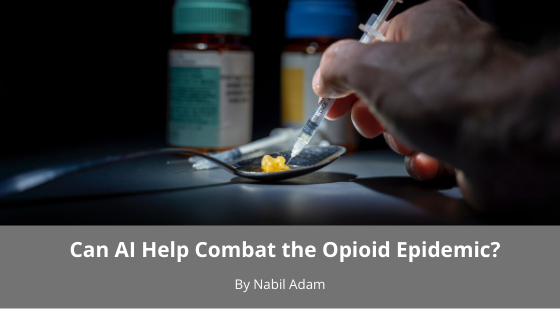Opioid addiction and overdose numbers in the United States have risen exponentially in the past three decades. Pharmaceutical companies looking to make money convinced the medical community that opioid painkillers were safe, and physicians began prescribing them in greater numbers. The increase led to widespread misuse not only of prescription opioids but also an increase in illicit opioid use.
Now, as we continue to fight the opioid epidemic, we must employ all available resources to prevent opioid misuse from happening in the first place as well as help those who have become addicted to recover. One of those resources may be advances in machine learning, a type of artificial intelligence.
One way in which artificial intelligence can aid the medical community in combating addiction is by predicting patients’ risk of an overdose. According to the American Medical Association, its algorithms are better at avoiding false positives than the other methods currently in use and that the machine-learning-based algorithms are indeed a “valuable and feasible tool” in fighting the deadly epidemic. This technology has the potential to bolster a Prescription Safety Alert System as delineated in the ALERT Act of 2019. If the bill is passed into law, the system will offer instantaneous feedback every time an opioid is dispensed. It would scan the patient’s prescription history and calculate a clinical risk score that could tip off dispensers patterns indicate an individual might be pharmacy shopping. This system would operate directly within physicians’ workflow as well as track data in real-time even across state lines.
Another use of AI is the Defense Intelligence Agency’s SABLE SPEAR. This mass data analytics tool “uses machine learning to ingest large datasets of publicly available information to locate indicators of illegal or suspicious activity.” While some drugs are only produced in specific parts of the world, synthetic opioids can be produced practically anywhere. This technology allows the intelligence community to better target production facilities, transit methods, and individuals within the supply chain and do so quickly.
Machine learning can also be used in hospitals and clinics to prevent hospital drug diversion. When it comes to opioid misuse, those closest to the drugs are not immune. Those in healthcare professions are often under a great deal of stress, and sometimes they can resort to unhealthy coping mechanisms. Healthcare workers can endanger patient safety by diverting opiates or other controlled substances “away from patients for personal use or sale.” Typically this sort of behavior would only be detected by tediously piecing together various reports to identify abnormal patterns of medication use. By the time a diverter is caught, the patient’s safety may already have been compromised. However, using machine learning along with standard automated medication dispensing systems, hospitals and pharmacies can monitor data from multiple sources. Medications can be tracked in real-time as they move from their arrival at the hospital pharmacy to delivery, and to the point at which they’re administered to the patient. Analyzing this data to detect commonly identified behavioral markers, the analytics tool indicates each individual’s potential for diversion. This can allow intervention to occur before any harm can be done.
Artificial intelligence and machine learning technologies are capable of providing some solutions to a tragic epidemic. None of these measures alone can address the issue, but together, they may be able to have a positive impact.

